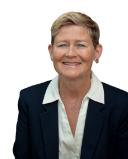Recently, the province of Ontario found itself in a public relations battle over the content of its new sexuality education curriculum. Some parents and conservative religious groups were opposed to discussions about gender identity and diverse family structures at Grade 3 and didn't want discussions of oral and anal sex to be included in the Grade 7 classes on safer sex and transmission of sexually transmitted infections. When sex education is presenting information that is intended to reduce social discrimination and address public health issues, why is it so contentious? Who gets to decide what is too much, too soon?
Health and sexual education curricula have been a constant source of controversy: How much information should be taught in schools? At what age should such courses begin? Do schools have a responsibility to teach about public health issues related to safer sex practices and contraception or should that remain the responsibility of parents? How successful is abstinence-only education? The contexts and constraints on sexuality education differ greatly depending on the standards of each state or province as well as differences due to urban and rural divides. In a recent study of rural educators, some of the reported reasons for this variation between urban and rural schools is attributed to several causes: greater religiosity in rural communities; greater scrutiny of administrators' decisions by the church, school board, and community; and greater physical proximity and emotional closeness between rural educators and their students (Blinn-Pike, 2008).
It is also important to note the impacts of abstinence-only-until-marriage programs in some parts of the U.S. since 1996. President Bill Clinton signed the Personal Responsibility and Work Opportunity Reconciliation Act which laid the foundation for these programs. In 2004, President George W. Bush promised to double federal funding for abstinence programs (Fisher, 2009). In recent years, the tide seems to be turning: in 2008, 17 U.S. states either refused to accept federal funds tied to abstinence-only programs or have passed laws requiring comprehensive sex education (Ashcraft, 2008). In May 2009, President Obama proposed cutting federal funding for abstinence-only programs in favor of a more comprehensive approach to sexual education (Jayson, 2009). We know that providing students a forum in which to learn about and discuss issues related to sexual and reproductive health is essential to their academic persistence and success (Ashcraft, 2008; Walters & Hayes, 2007). Research also demonstrates that BGLQT students who attend schools where abstinence-only sexual education curriculum is in place report higher levels of victimization related to their sexual orientation and gender identity than other students and less comfort talking 1-on-1 with school personnel about BGLQT issues (Fisher, 2009; Kosciw et al., 2008, p. 136).
Health and sexual education classes used to be the only place where any mention of sexual identity, orientation, or behavior was discussed in schools and this was usually in relation to HIV and AIDS prevention programs (Lipkin, 1995). This one-sided presentation of issues related to BGLQT people tended to present a negative perspective of BGLQT sexual behaviors and life experiences. Richard Friend referred to this as systematic inclusion, or the repeated or regular inclusion of information about BGLQT people in a negative light (Friend, 1993). This systematic inclusion combined with the systematic exclusion of positive and well-rounded perspectives about BGLT people and their lives perpetuates harmful myths that all BGLQT people are promiscuous and are at-risk for HIV, AIDS, and other sexually transmitted infections. More recently, Michelle Fine has called this an "active silence"(Fine, 2005). One gay youth articulated how this active silence impacted him by explaining, "if you aren't represented when they talk about human sexuality-you're not human. You can't be, because you're not included. You're not included. And that's fucked up" (cited in Fisher, 2009, p. 71).
In one study, researchers reported the ongoing homophobic jokes and remarks that went unchallenged during one teacher's lesson on AIDS and HIV. The lesson began with the teacher first asking if the students knew what AIDS stood for and a student replied, "homo." The teacher ignored this remark and answered the question herself. She then asked about HIV and got the same answer: "homo," which she ignored again. This then allowed the rest of the lesson to be peppered with homophobic comments and insults. Additionally, she implicitly perpetuated misinformation that only gay people are at risk for HIV or AIDS (Fields & Hirschman, 2007). Although it is important to inform students about the risks involved in unprotected sex, it is dangerous to imply that heterosexual behaviors may not be as risky as homosexual behaviors.
Fields & Hirschman use this example to point out that sexuality is not merely a private issue, rather it is deeply imbedded throughout public life. They explain that, "sexual desires, behaviors, and norms inform identity claims, media representations, and educational policies. Sexuality is an experience and institution at work in interactions among citizens in the workplace, courts, schools, streets, and homes" (p. 20). They advocate for a citizenship approach to sexuality education that can "recognize (or fail to recognize) one another as fully enfranchised members of a society" (p. 5) and can provide validation and inclusion in community life for diverse identities, families and relationships.
In order to combat such misconceptions, health and sexual education courses should offer information not only on sexual behaviors, but also on relationship issues and on healthy decision-making. One example of this is Seattle's Family Life and Sexual Health (FLASH) curriculum which introduces the concept of the Kinsey scale, the differences between sexual identities and behaviors, as well as the historical and social contexts of anti-gay prejudice and discrimination (Lipkin, 1999, p. 344).
Finally, it is important to recognize that many educators called on to teach sexual health do not feel adequately prepared to address such diverse and complex issues (Westwood & Mullan, 2007). Often these courses are assigned to the Physical Education or Health teachers, but this topic should not be seen as exclusively their domain. For example, in one Colorado school the Biology and Social Science teachers came together to design a course that would meet the needs and interests of their students (Michner, 2006). In the Canadian Province of Quebec, the five hours a year of sexual education classes were removed from the curriculum and teachers in all subject areas are now expected to integrate topics related to sexual education throughout their courses (Gouvernement du Quebec, 2004). Although this has raised some concern among educators, the philosophy behind the change is to integrate lessons related to sexuality throughout the curriculum so that all members of the school community are responsible for ensuring that students learn about sexuality issues in the context of other content areas.
At its meeting last month, the Texas Board of Education cut the following from its standards for High School Sociology: "The student is expected to: (A) differentiate between sex and gender as social constructs and determine how gender and socialization interact;" See http://tfninsider.org/2010/03/11/blogging-the-social-studies-debate-vi/
for reporting on the session where this item was cut. The impacts of the decision of the Texas board are far-reaching due to the significant market influence it has over textbook content.
Parents always have the right to teach their children what they value and to pass on their religious and cultural perspectives. However, when the narrow views of one particular value system censors the content of education that is designed to meet the diverse needs of a democratic society, political leaders and state departments (or ministries) of education need to act in the best interests of the general population. Respect for diversity and preventing communicable diseases are essential aspects that should be part of public education. Sexuality education that is comprehensive and inclusive of all family structures and sexual orientations, behaviors and identities is essential to creating a more respectful and healthy society. Parents who oppose these democratic approaches to learning have the option of private or religious education or home-schooling for their children. Public schools should be providing more information that promotes public health and appreciation for diversity, not less. Professional educators and public health officials should be the experts advising what this curriculum should include, not politicians with no background or training in this area.
For more reading on this topic see:




